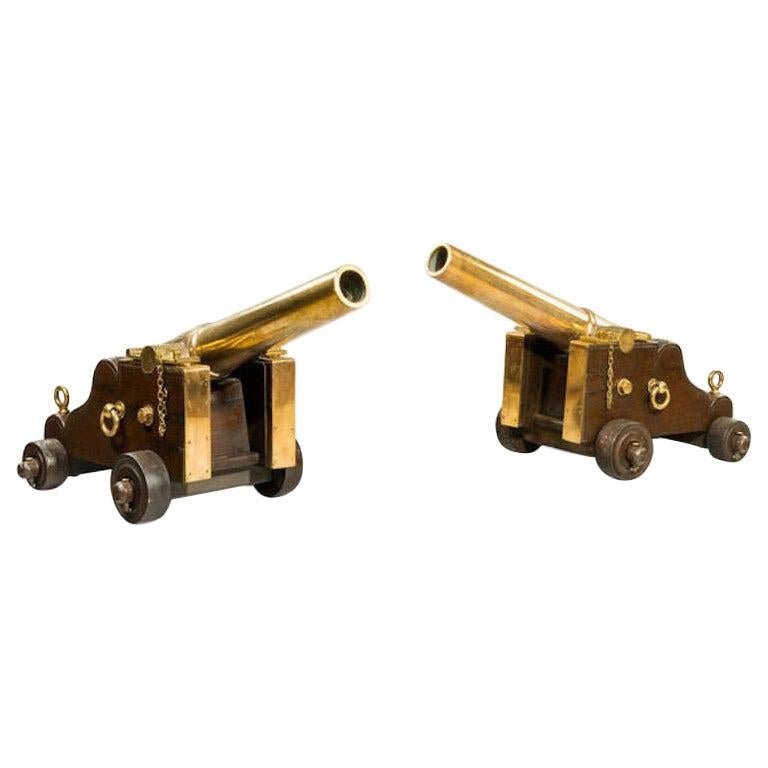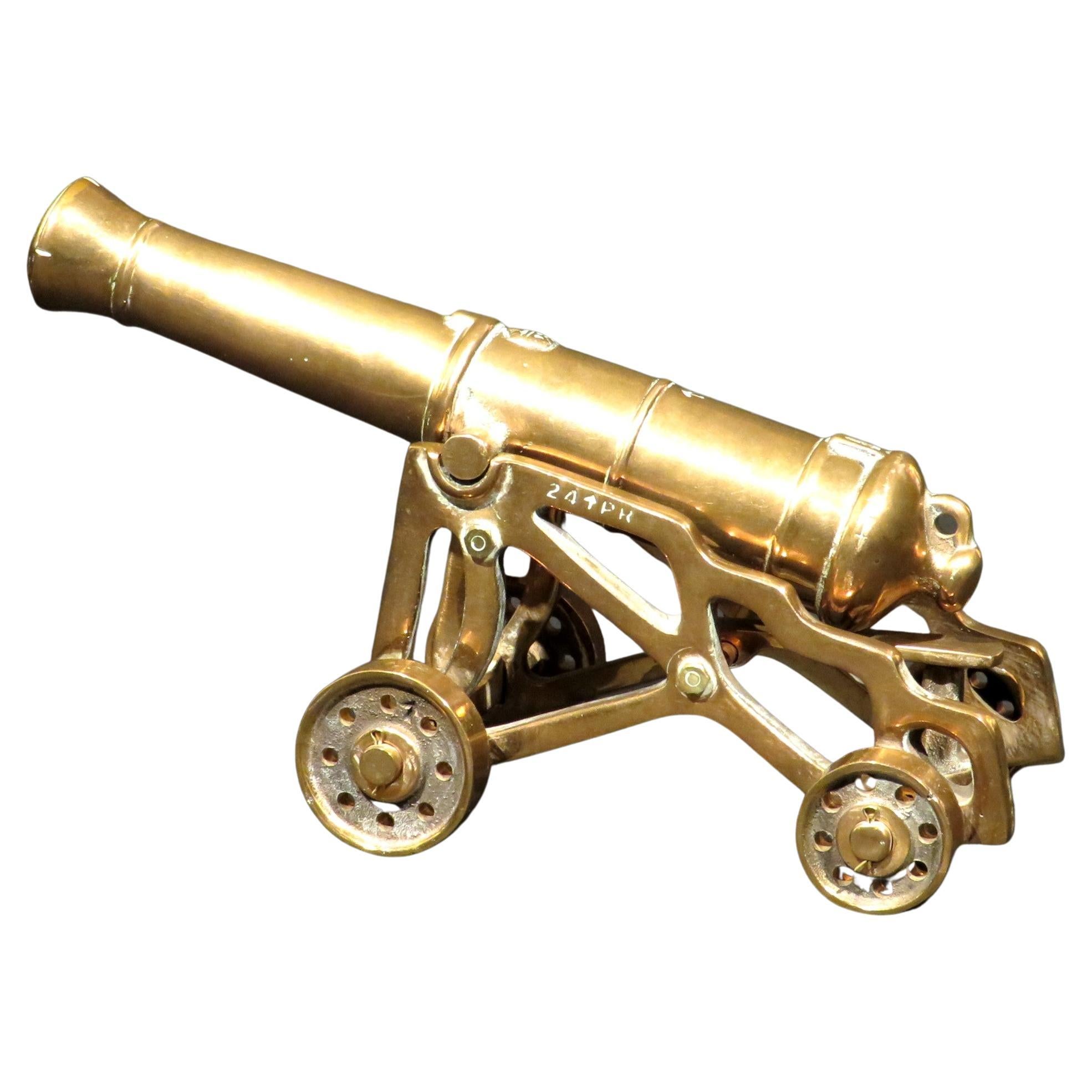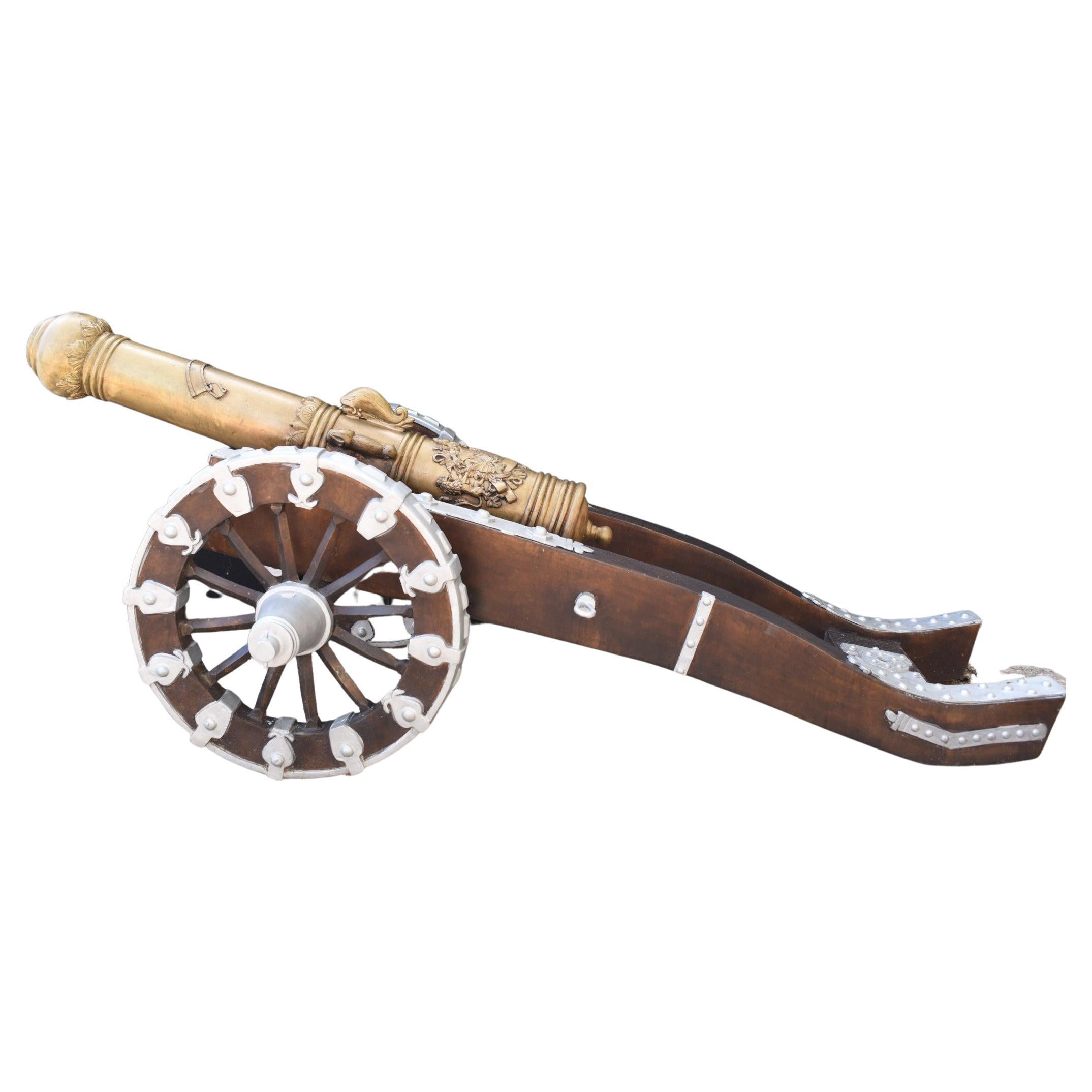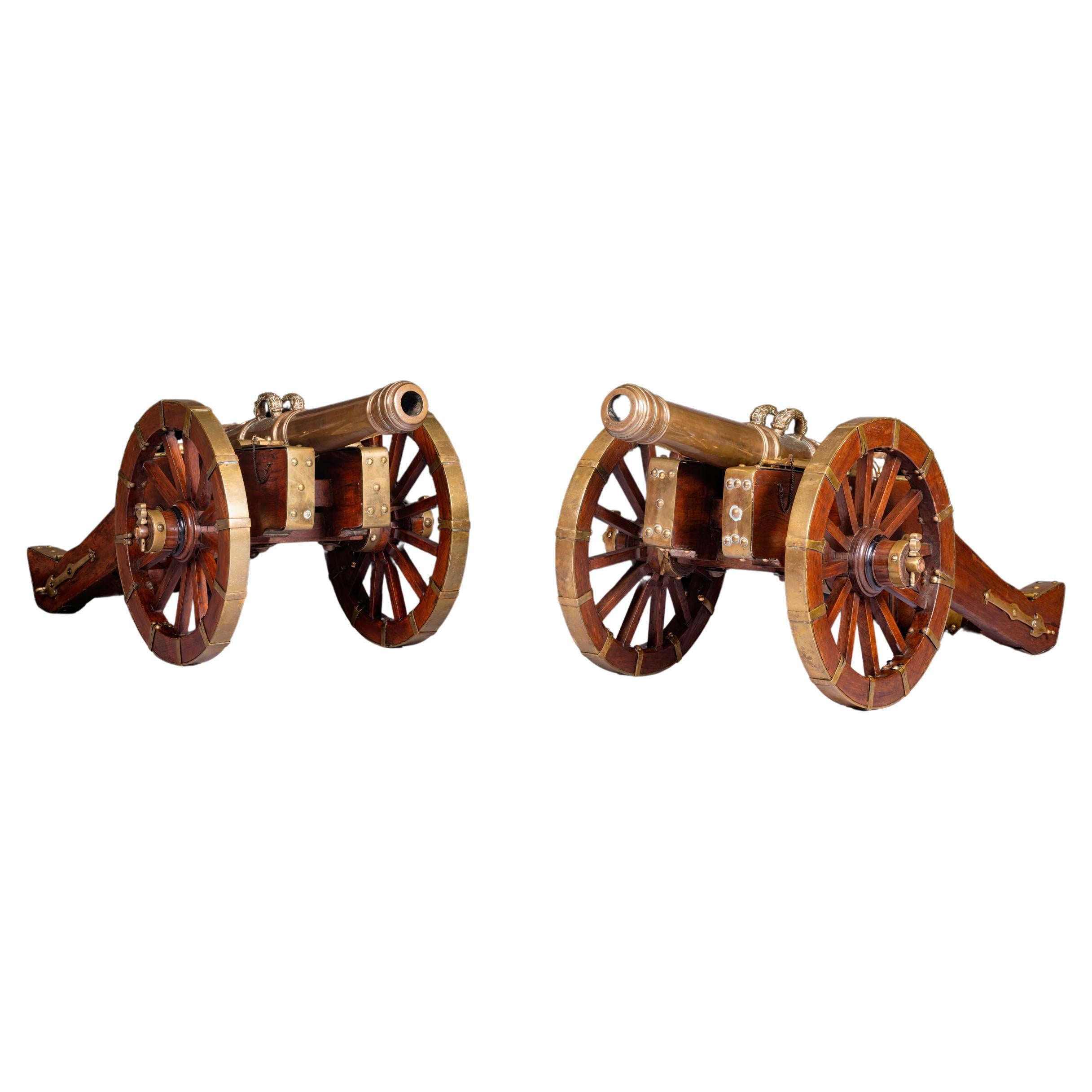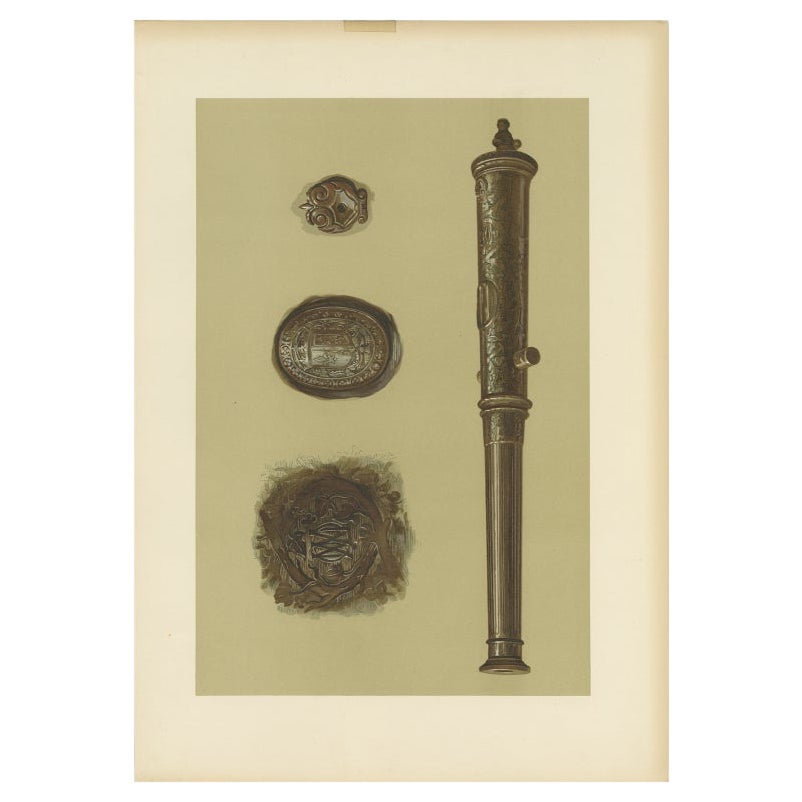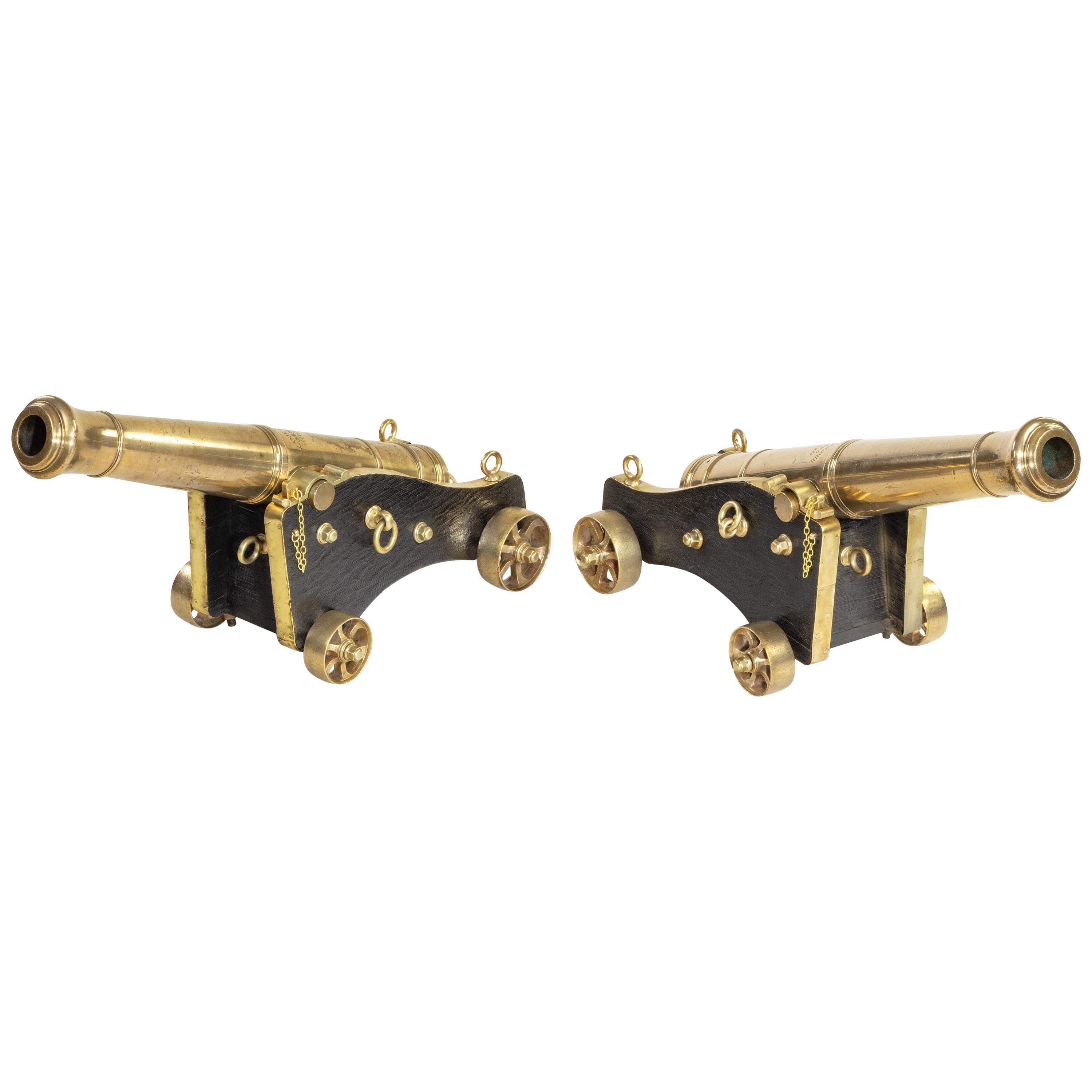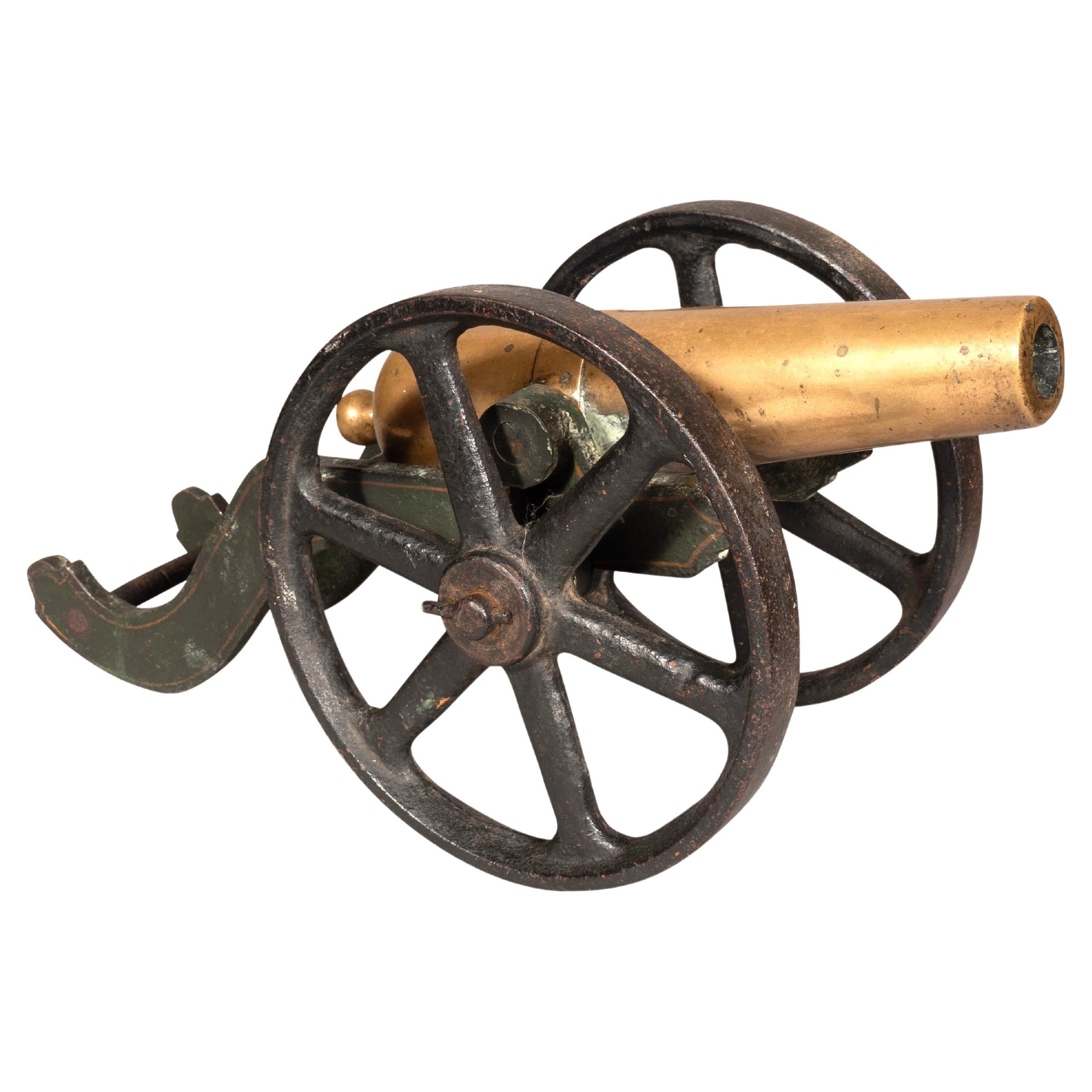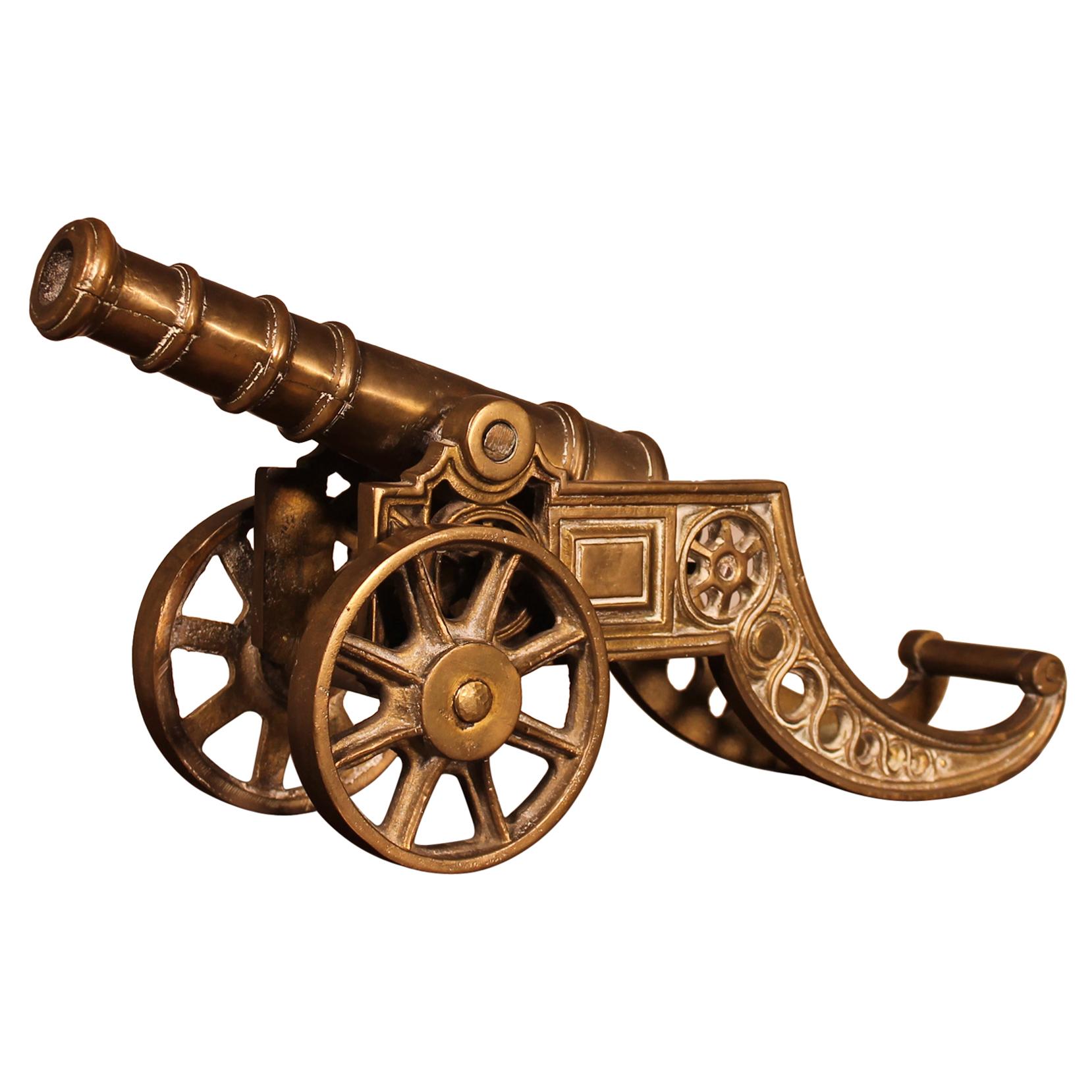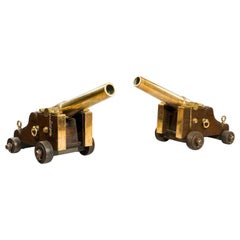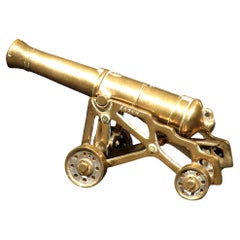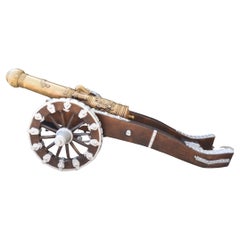
Pair of Armstrong-Frederick Pattern, "Half-Pounder" Bronze Cannon
View Similar Items
1 of 5
Pair of Armstrong-Frederick Pattern, "Half-Pounder" Bronze Cannon
About the Item
- Dimensions:Height: 13 in (33.02 cm)Width: 39 in (99.06 cm)Depth: 17 in (43.18 cm)
- Sold As:Set of 2
- Materials and Techniques:
- Place of Origin:
- Period:
- Date of Manufacture:1750-1775
- Condition:
- Seller Location:Sutton Coldfield, GB
- Reference Number:Seller: 62921stDibs: LU122322541772
You May Also Like
- Pair of English Bronze Signal CannonLocated in Lymington, HampshireA fine pair of English bronze signal cannon, the tapering 36 inch two stage barrels set upon original mahogany carriages with bronze fittings and ...Category
Antique 1850s English Arms, Armor and Weapons
MaterialsBronze
$68,016 / set - A Fine Model of a 19th C. British 24-Pounder Muzzle-Loading Smoothbore CannonLocated in Ottawa, OntarioA finely cast model of an early 19th century British 24-pounder smoothbore muzzle-loading artillery cannon, together with its garrison style carriage. Both cast in heavy gauge 'bell...Category
Early 20th Century British Victorian Arms, Armor and Weapons
MaterialsBronze
- Pair Giant French Bronze Cannons, Military ArtilleryLocated in Potters Bar, GBImpressive pair of large French bronze cannons Great for a garden or business Of course being bronze these can live outside with no fear of rusting Viewings available by appointm...Category
Vintage 1980s Arms, Armor and Weapons
MaterialsBronze
- French Bronze Cannon ModelLocated in New York, NYFrench bronze World War I (19/20th Century) field cannon on rectangular white marble baseCategory
Antique 1880s French Models and Miniatures
MaterialsMarble, Bronze
- Pair Of Large 19th Century English Bronze Artillery Signal CannonsLocated in Dublin, IEA magnificent pair of 19th century British Artillery signal cannons, each with tapered bronze barrel segmented by hoops, cannon muzzle and stepped breechblock with drop-shaped cascab...Category
Antique 19th Century English Arms, Armor and Weapons
MaterialsBrass, Bronze
- Pair of Antique English Naval CannonLocated in Lymington, HampshirePair of antique English naval cannon each with a tapering three stage barrel flanked by plain trunnions, with a knob shaped cascabel button before a shaped rectangular raised vent and ending in a 3 1/2” bore muzzle, enclosing a removable conforming wood plug, circa 1800. Stood upon a naval type bronze-mounted four wheeled wooden carriage, including its wedge shaped quoin with knob handle. The Earls of Lonsdale, Lowther Castle, Cumbria, presumably by descent to Hugh Cecil Lowther, 5th Earl of Lonsdale (1857-1944), until sold by his heir and brother, Lancelot, 6th Earl, as part of the contents of Lowther Castle, Maple & Co. Ltd./Thomas Wyatt, Tuesday 14 April 1947 and two following days, lot 558: ‘A pair of Old Gun Metal Cannons on teakwood carriages, 3ft. 6in. long’. Mrs. P.M. Adie-Shepherd, sold Christie’s, London, 29 May 1970, lot 96. Lowther Castle is a castellated mansion built by Robert Smirke between 1806 and 1814 for William Lowther, 1st Earl of Lonsdale (1757-1844). It was constructed on the foundations of the former 17th century family seat, Lowther Hall, but it was only in the early 19th century that it was afforded the name ‘castle’ in keeping with the Europe-wide fashion for romanticism and which was promoted by influential characters such as William Beckford at Fonthill Abbey, Wiltshire in England and by the writer Sir Walter Scott at Abbotsford, Roxburghshire, Scotland. While it’s not known when these naval cannon were acquired for Lowther they would have been entirely fitting in the castle or its approaches and it’s likely that they were in place soon after the castle was completed, or perhaps acquired later by the 5th Earl. A tantalising possibility is that the cannon were originally aboard the East Indiaman Lowther Castle which was active in the early 19th century. HUGH CECIL LONSDALE, 5TH EARL OF LONSDALE (1857-1944) AND THE DEMISE OF LOWTHER CASTLE In 1882 at the age of 25 Hugh Lonsdale (1857-1944) unexpectedly inherited the earldom and with it the extensive Lonsdale estate, including tens of thousands of acres of Cumberland and Westmorland and coalfields at Whitehaven. However, despite his spectacular inherited wealth – he was suddenly one of the wealthiest men in England, over the course of his lifetime he managed to decimate the family fortune. He led a full and colourful life, one of adventure and luxury. An early intrepid escapade took place in July 1888 when, as part of an expedition called the Scotch Naturalist Society, he set embarked on horse sleigh...Category
Antique Early 1800s English Arms, Armor and Weapons
MaterialsBronze
$168,604 / set
